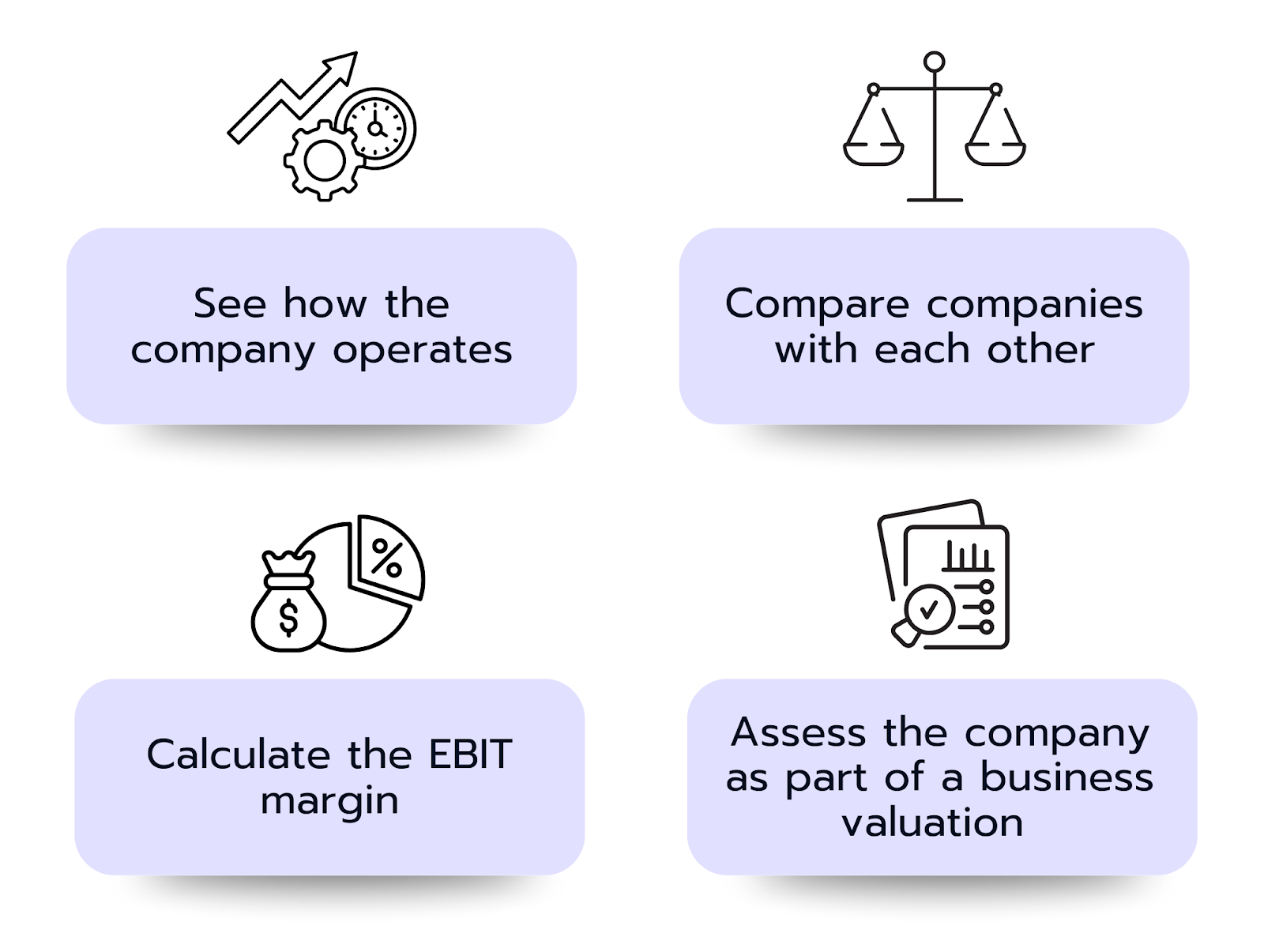Where Can You Find EBIT in Financial Statements?
You can find EBIT in the financial statements within the income statement. However, it is often not explicitly shown and needs to be calculated yourself. There are two common methods for this:
Top-Down Method (starting from revenue):
You calculate EBIT by subtracting all operating expenses (such as materials, personnel, depreciation, other operating expenses) from revenue, while ignoring interest expenses and income taxes.
→ EBIT = Revenue – Operating Expenses (excluding interest and taxes)
Bottom-Up Method (starting from operating result):
You begin with the operating result (often called this or referred to as “result from ordinary business activities” or something similar) and then add back interest expenses and interest income (net), as well as taxes if they have already been deducted.
→ EBIT = Operating Result + Net Interest ± any other neutral effects
Both methods should lead to the same result, provided the income statement is complete according to either the total cost or cost of sales method and all items are correctly identified.
What Does EBIT Reveal?
Now you know what EBIT is and where to find it. But what is the actual benefit of this metric?
EBIT shows you how well a company earns money from its core business activities, completely independent of how it is financed (for example, through loans) or in which country it pays taxes.
The EBIT helps you:
- to see how efficiently the company operates. That is, how much of the revenue remains as operating profit in the end.
- to compare companies with each other, even if they are located in different countries or financed differently.
- to calculate the so-called EBIT margin, which is the ratio of EBIT to revenue, answering questions like: “How much profit remains from every euro of revenue?”
- to assess the company as part of a business valuation (this is especially important in finance or investment banking job applications).

Example for context
Imagine two companies that both make 10 million euros in profit at the end. At first glance, they seem equally successful. But:
- Company A has high debt and has to pay 7 million euros in interest per year.
- Company B only pays 1 million euros in interest.
Both have the same profit, but Company B operates much stronger on an operational level because it earns more from its actual business. EBIT shows you this difference clearly because it measures profit before interest and taxes.
The EBIT margin
The meaning of EBIT becomes even clearer when you look at the EBIT margin. Let’s say company B has revenue of 100 million euros and an EBIT of 11 million euros (10 million euros profit plus 1 million euros interest). This results in an EBIT margin of 11 percent. This means that 11 cents remain as operating profit from every euro of revenue.
This metric helps you understand how efficiently the company operates, how it stands compared to competitors.
Especially in finance interviews, not only is the definition asked, but also whether you can assess the significance and limitations of EBIT in real situations. That is why it is important to engage deeply with EBIT and the factors that influence it.
Common Questions About EBIT in Finance Interviews
When preparing for finance interviews, you should not only know what EBIT is but also be able to explain, interpret, and apply it confidently. It often comes up during interviews. Here are some typical questions you should be ready for:
What is the difference between EBIT and EBITDA?
EBIT includes depreciation, while EBITDA does not. That means EBITDA gives a more “adjusted” view of how well the business is performing, without the effect of non-cash costs.
How is EBIT used in company valuation?
EBIT is often used to calculate the EBIT multiple, a common valuation metric. You divide the company’s value (e.g. purchase price) by EBIT to see how many years of operating profit it would take to “pay off” the investment.
How does IFRS 16 (Leasing) affect EBIT?
IFRS 16 is an accounting rule that requires companies to treat long-term leases like loans. Because of this, fewer lease costs are included in operating expenses—making EBIT look higher than before.
What does a negative EBIT margin mean?
A negative EBIT margin means the company is losing money from its core business. It’s spending more than it earns, before interest and taxes are even considered.
What’s the difference between Operating Profit and EBIT?
In many cases, they mean the same thing. Operating Profit is another name for EBIT. But sometimes companies include or exclude special items differently, so it’s important to check the notes in the financial report.
👉 By the way, with our question sets in the case collection, you can practice answering these common finance interview questions!
